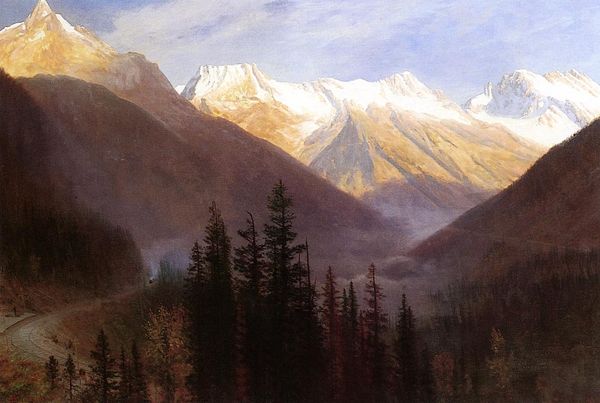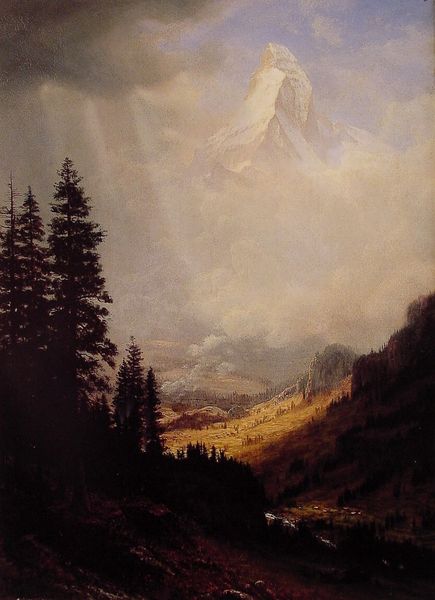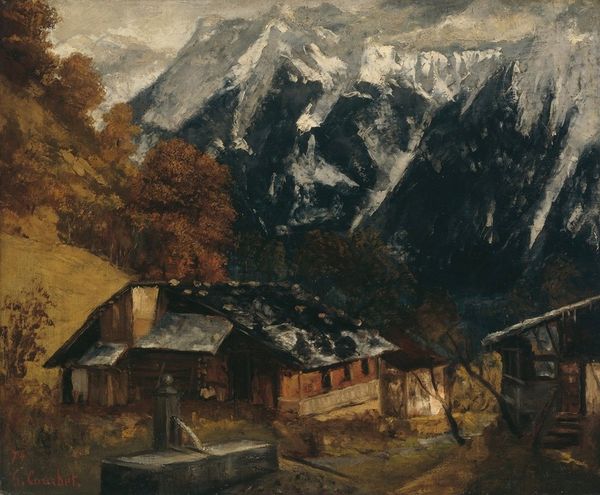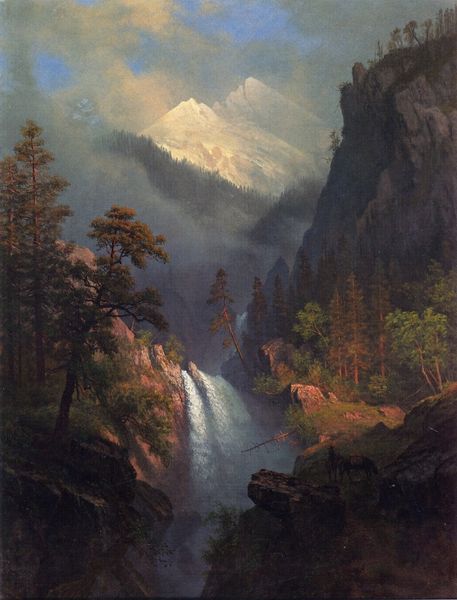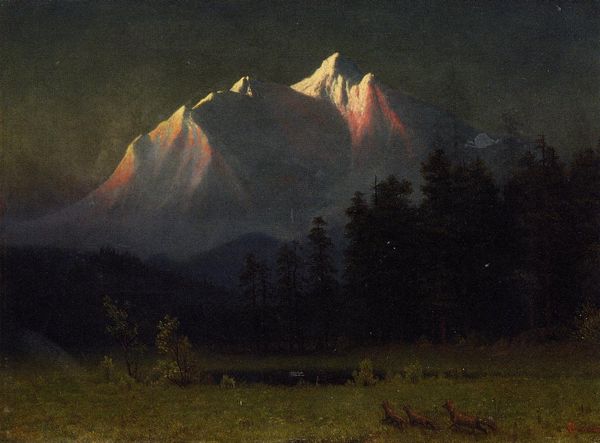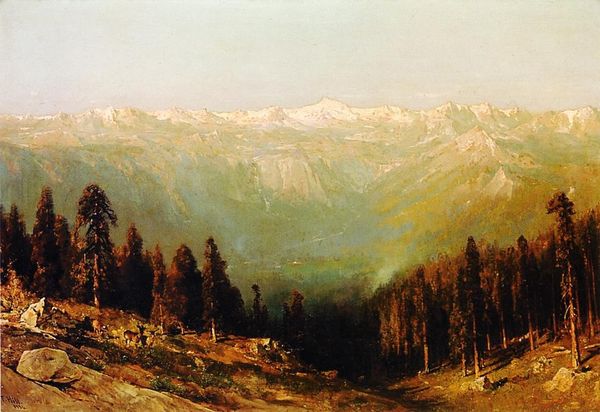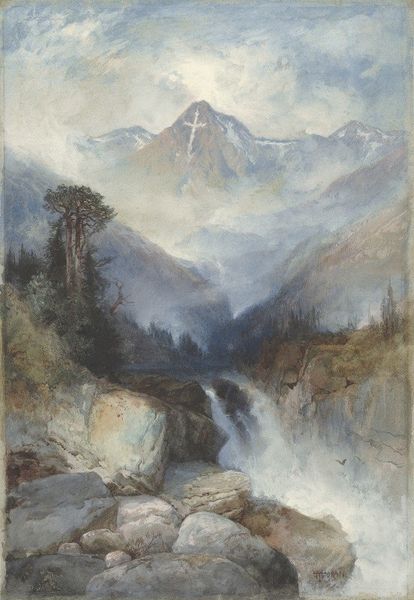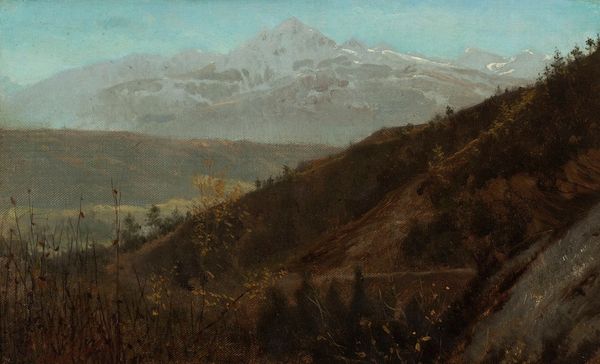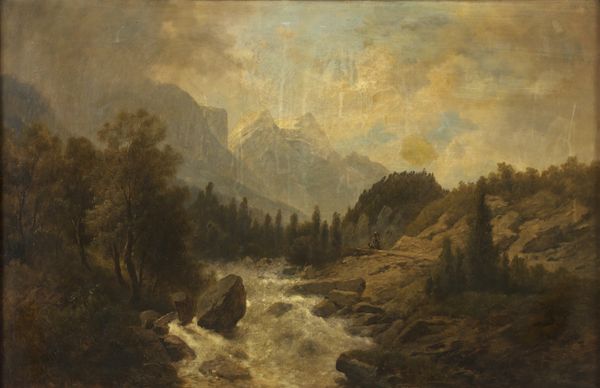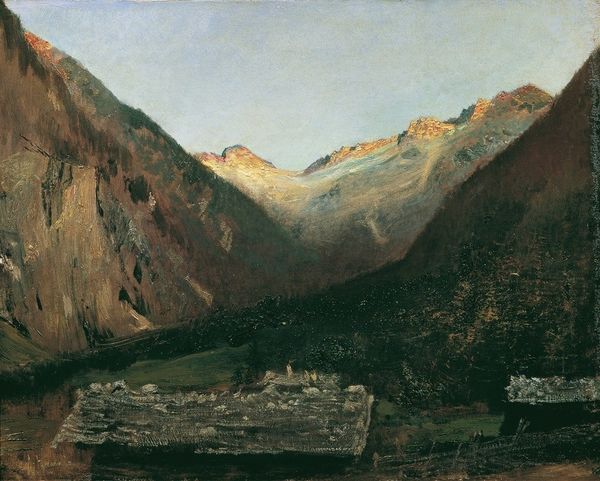
Copyright: Public Domain: Artvee
Curator: This painting is titled "Wildbad Gastein am Abend," or "Wildbad Gastein in the Evening," painted by Anton Romako in 1877. It's an oil on canvas depicting a cityscape nestled within a dramatic mountainous landscape. Editor: My first impression is that this painting evokes a strong sense of isolation. The darkness, pierced only by tiny pinpricks of light from the town, creates an almost dreamlike, or perhaps nightmarish, quality. Curator: Yes, that isolation is a key component. Wildbad Gastein was a popular spa town for the elite in the 19th century, and Romako himself was often on the fringes of that society, seeking patronage but never quite fully integrated. The painting was executed 'en plein air' capturing the sublime quality. Editor: The stark contrast between the warm, inviting glow of the town and the imposing, shadowy mountains surrounding it speaks volumes about societal divisions. There's a visual power dynamic at play, the vulnerable, concentrated settlement against the dark sublime nature. The architecture, almost Gothic, conveys a sense of the elite but simultaneously feels trapped, perhaps reflecting a similar feeling experienced by those who sought solace and escape there. Curator: That's an interesting read. I agree there is the cityspace theme combined with an overwhelming force of nature, in what can be identified as the baroque art, contrasting the eternal versus the modern times. This aesthetic style also plays out in the scale – notice how Romako uses the vastness of the landscape to dwarf the town, further emphasizing human insignificance. He seems to portray the ambivalent emotions produced by modernization through its composition and execution. Editor: Exactly, there’s an unease that resonates deeply. It makes me wonder about the lives of the individuals within those glowing windows. What secrets do they hold? What are their struggles in a place ostensibly dedicated to leisure and wellness? Who had access to such sites of healing, and who did not? It encourages contemplation about health, privilege, and social exclusion, which sadly continue being problems until modern times. Curator: I think we both found ways into Romako’s dramatic and beautiful painting through different perspectives. This image encapsulates how landscapes can function as social documents reflecting specific moments in cultural history. Editor: Indeed, it illustrates how landscapes, even those that seem serene at first glance, can conceal complicated societal and personal stories when viewed through an intersectional lens. It urges to see art as always engaged in sociopolitical dynamics.
Comments
No comments
Be the first to comment and join the conversation on the ultimate creative platform.

